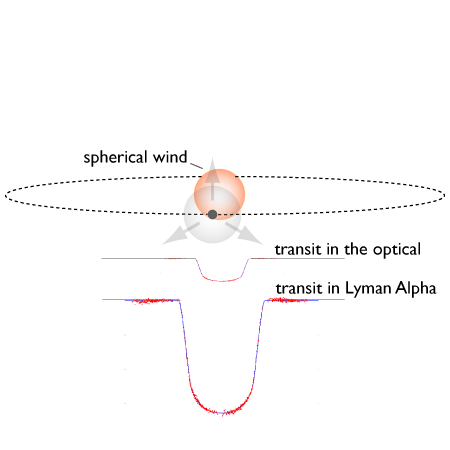
Image Source.
This has not been the best month to get swamped with work and as a result essentially ignore my extrasolar planet weblog. The discoveries have been coming thick and fast, and many of them have some very interesting ramifications. So I’m going to make an effort to get back to a regular schedule of posts.
Staying up-to-the-minute on extrasolar planets can involve quite a bit of work. Fortunately, for the past year, Mike Valdez has been combing astro-ph each day as soon as the new mailings are released. He applies a strict standard of applicability to select the papers relevant to extrasolar planets, and reports the most interesting ones here on the systemic backend. I recommend this service to everyone.
HAT P-5b, WASP-3, OGLE-TR182b, WASP-4, HAT P-6b, WASP-5. Man. It seems like the transit detection rate is ramping up significantly. In all probability, the bottleneck is now the pace of RV confirmation with 8-meter class telescopes, rather than any shortage of transits themselves. It’ll be very interesting to see what the correlation diagrams and the planet catalog looks like one year from now.
Earlier this month, Ruth Murray-Clay visited UCSC, and gave an interesting talk about work that she’s been doing with Eugene Chiang on a model for the winds that flow off of hot Jupiters. Back in 2003, the Hubble Space Telescope was used to observe the HD 209458 b transit in the ultraviolet region of the spectrum surrounding the Lyman-alpha line. It turns out that the HD 209458 b transit has a depth of order 15% in Lyman alpha, indicating that a comet-like wind of hydrogen is flowing off the planet. Here’s a cartoon view:

The Murray-Clay and Chiang model assumes a steady-state flow, which allows them to adopt a time-independent treatment of the equations of hydrodynamics. It would be interesting to relax the time-independence and extend the analysis to the recently detected transits of HD 17156b. Because HD 17156b has such an eccentric orbit, any comet-like wind that it produces should be time-variable in nature. It should thus be possible to make some interesting predictions that can be tested when the community eventually regains the capability of observing transits in the ultraviolet.

Hi, Greg!
Is GALEX still operational?
see:
http://www.galex.caltech.edu/
Niko
Mike Valdez’s publication listing is a great idea and I’d like to use it in the future, rather than my buggy grep-by-eye method for astro-ph. However, there appears to be a small glitch causing the entries to become totally gray at about the third entry down. I’m sure this will be easy to fix.
It would also be useful to have clickable URLs to the PDF files of the preprints.
Thanks, Mike, for putting this together!
-JohnJohn
That graying comes from the papers themselves. They use LaTex symbols that are misinterpreted by wiki. I do not have any way to avoid it.
Thanks for your comment. I try to help.
Mike
You could surround the pasted abstracts with <nowiki> … </nowiki> tags – this turns off wiki parsing in a block of text, which should eliminate this problem.
Thanks Andy. I will try it.
Mike